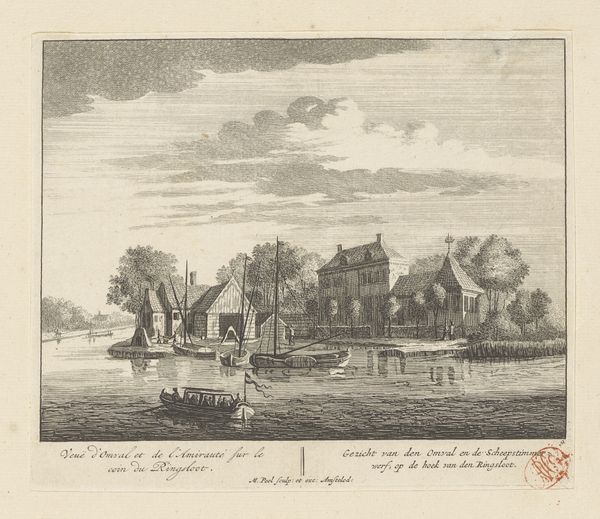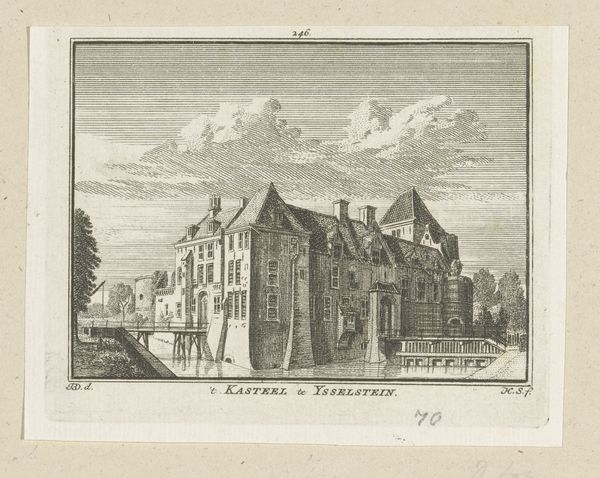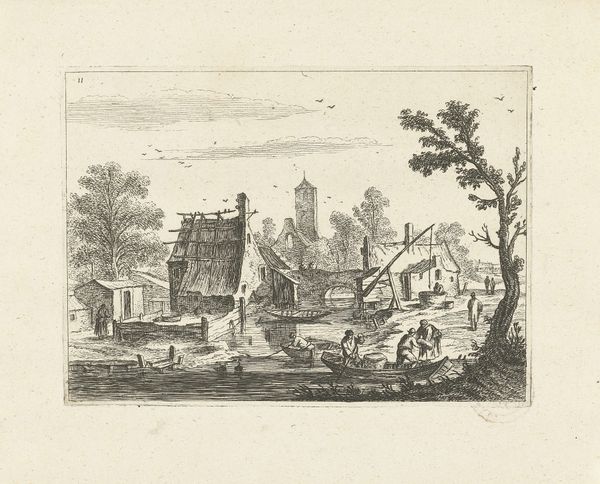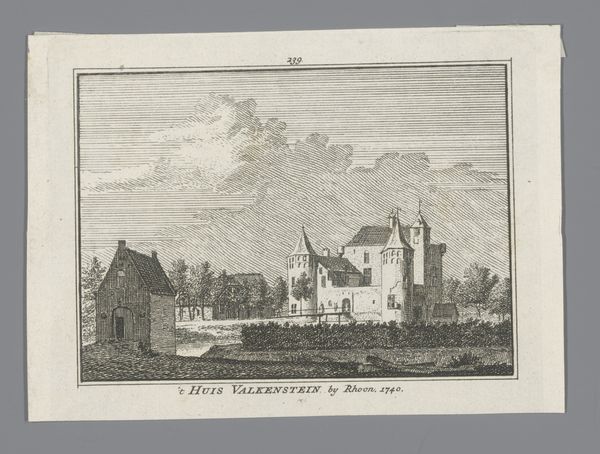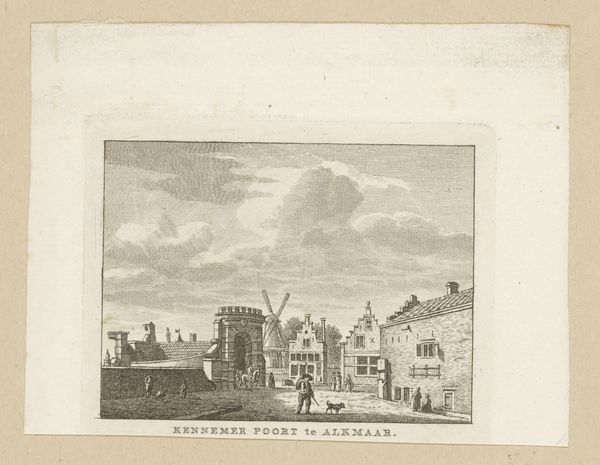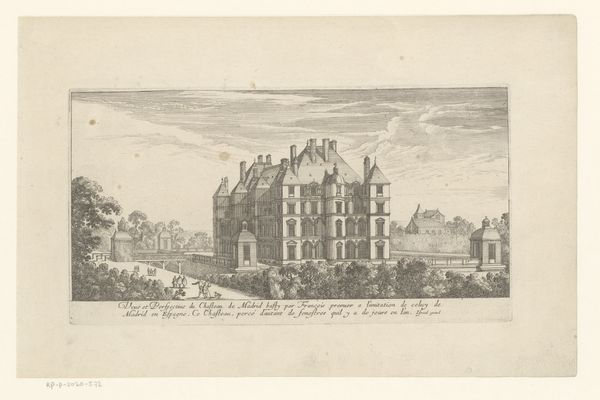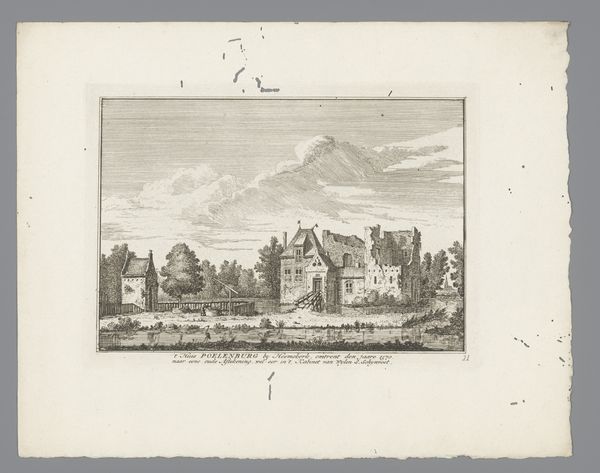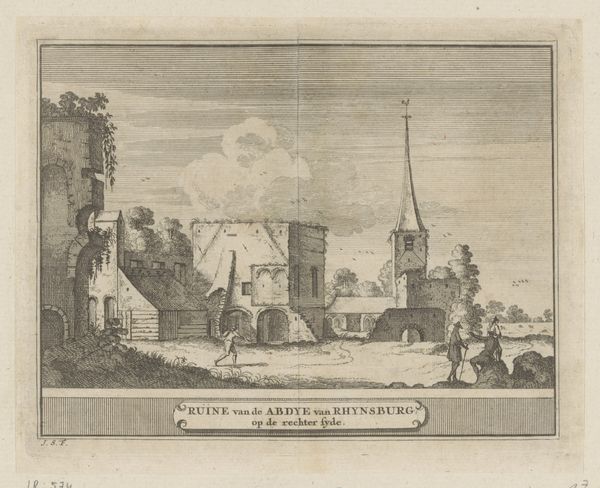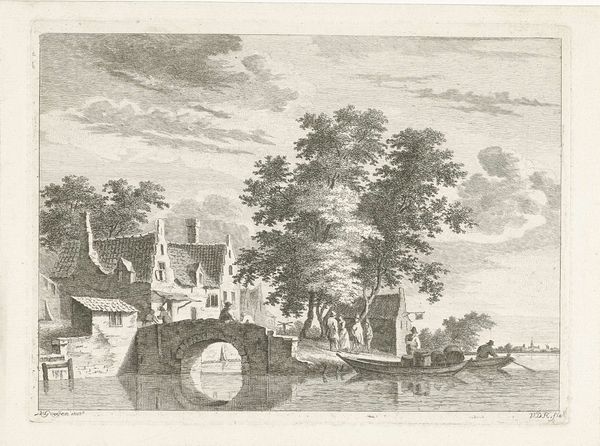
Dimensions: height 87 mm, width 109 mm
Copyright: Rijks Museum: Open Domain
Hendrik Spilman created this print of Gezicht op Kasteel IJsselstein in 1744. It's an etching, a process that democratized image production in the 18th century. Prints like this circulated widely in the Dutch Republic. Spilman's work is interesting because it's not just a straightforward record. It's a commentary on power and place. Note how the castle, a symbol of authority, is softened by the surrounding nature. The composition, carefully framed, suggests a cultivated landscape, a visual representation of Dutch prosperity and control over their environment. The Dutch Republic was a society preoccupied with civic virtue and commercial success. Prints such as this reflected and reinforced those values, circulating ideas about national identity and social order. To fully understand this image, we need to delve into the archives, exploring estate records, travelogues, and other visual materials. Only then can we appreciate how Spilman’s print actively participated in shaping the cultural landscape of its time.
Comments
No comments
Be the first to comment and join the conversation on the ultimate creative platform.
